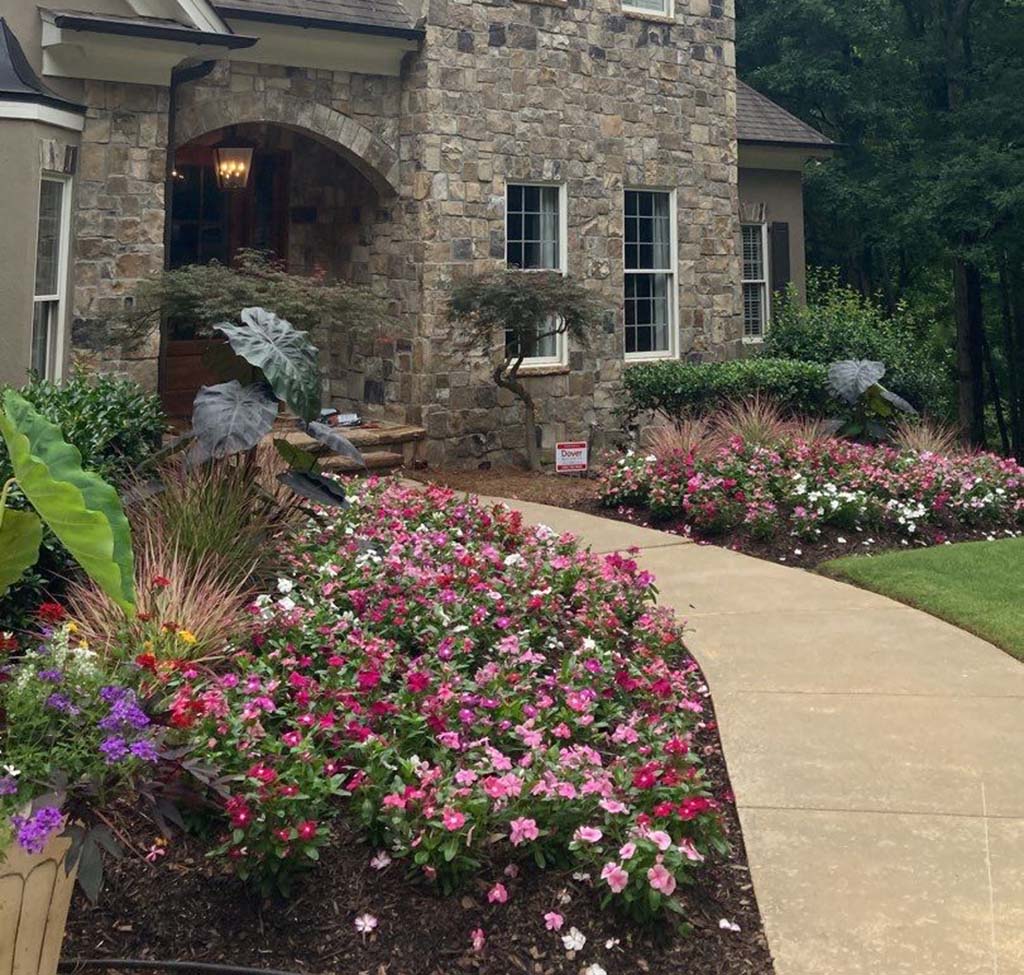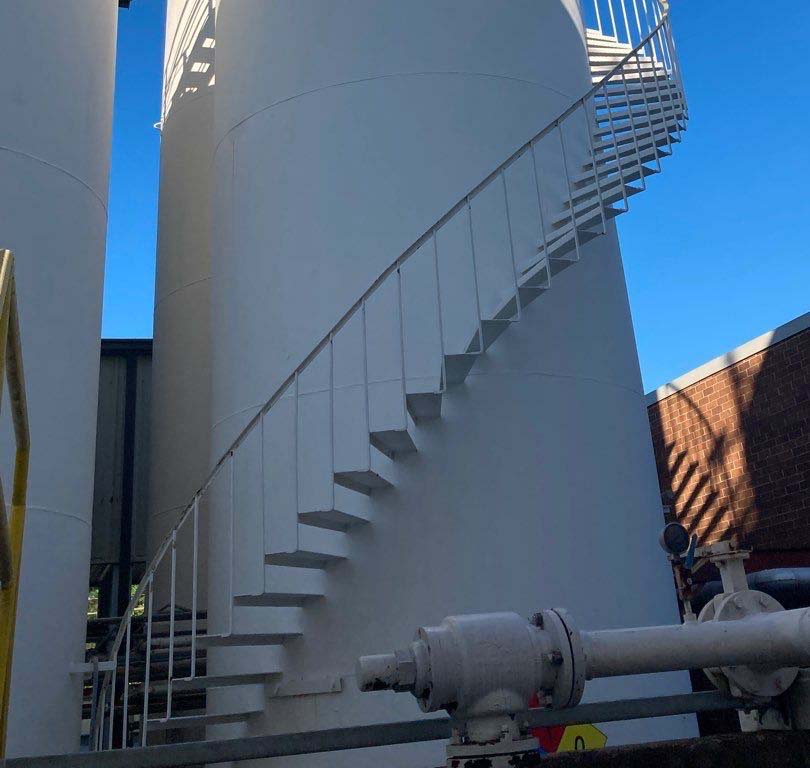
Choosing the right type of paint for exterior surfaces is crucial for both aesthetic appeal and long-lasting durability. There’s a wide range of options available, each with distinct properties that make them suitable for different surfaces and environments.
Oil-based paints, for example, are known for their resilience and smooth finish, making them a popular choice for wood surfaces. On the other hand, latex or water-based paints are easy to work with, dry quickly, and are often chosen for their low volatile organic compound (VOC) levels.
Acrylic paints, a type of water-based paint, offer excellent color retention and resistance against weather elements, making them ideal for most exterior surfaces.
Choosing the right paint finish – such as glossy, satin, or matte – also plays an important role in the final look and durability of the paint job. By understanding the characteristics of different types of paints, you can make an informed decision about what’s best for your project.
The world of exterior paints is vast and varied. Different types of paint are designed to perform best on specific exterior surfaces, and understanding these can be crucial to achieving a successful paint job. Here’s what you need to know:
Remember, your local climate and aesthetic preferences should guide your choice of paint formula and finish. Consider consulting with professionals for advice tailored to your specific needs.
Choosing the right type of paint for your exterior surfaces is crucial. It affects the durability, appearance, and maintenance of the painted surfaces. That’s why professional advice from companies like BCI can be invaluable in navigating these choices and ensuring a successful exterior paint job.

When painting metal surfaces, it’s essential to choose a paint that can withstand the elements and adhere well to the material. The best exterior paint for metal surfaces should be durable, weather-resistant, and rust-inhibitive.
One option to consider is oil-based paint, known for its strong adhesion and durability. Alternatively, acrylic latex paints are also a good choice as they offer excellent color retention and resistance to corrosion.
Before painting, it’s often necessary to apply a primer. Primers create a surface that paint can easily adhere to and can help prevent rust on metal surfaces. Some products are paint and primer in one, offering a convenient option for your painting project.
By choosing the right paint and primer, you can ensure your metal surfaces look great and stand up to the test of time.
Water-based paints, also known as latex or acrylic paints, are becoming increasingly popular for exterior surfaces due to their numerous advantages.
One of the main benefits is their low levels of volatile organic compounds (VOCs). These chemicals, found in higher concentrations in oil-based paints, can have negative effects on air quality and health. Hence, water-based paints are a more environmentally-friendly choice.
Additionally, water-based paints dry faster than oil-based counterparts, reducing the time between coats and speeding up your painting project. They also resist yellowing over time, ensuring your paint job retains its original color for longer.
In scenarios where quick drying time, low VOC levels, and color retention are priorities, water-based paint is an excellent choice for exterior surfaces.
The weather can be tough on exterior paint. That’s why it’s important to choose a weather-resistant paint for your home’s exterior. This type of paint can withstand extreme weather conditions and keep your paint job looking fresh for longer.
Enamel-based or oil-based paints are known for their durability. They can handle harsh weather well. Some paints also offer extra benefits like UV resistance and moisture protection. These features help protect your paint job from the sun and rain.
Think about your local weather when choosing paint. A paint that can resist the most common weather conditions in your area will make your paint job last longer.

When it comes to safeguarding your home’s exterior, the right paint can make a world of difference. Weather-resistant paint is specifically designed to withstand extreme weather conditions, protecting your home and keeping it looking its best.
Weather-resistant paints are formulated to resist fading and damage from the sun’s UV rays. They also offer moisture protection, helping to prevent problems like mold, mildew, and peeling that can result from exposure to rain or humidity.
Oil-based and enamel paints are well-known for their weather-resistant qualities. They’re durable and can stand up to a range of weather conditions, from scorching heat to freezing cold.
It’s also important to consider the typical weather conditions in your area when choosing paint. If your area experiences a lot of rain, for instance, you might want to look for a paint with excellent water resistance. On the other hand, if you live in a sunny climate, a paint with high UV resistance would be a good choice.
By choosing weather-resistant paint, you can ensure that your home’s exterior stays in great condition, no matter what Mother Nature has in store.
Maintaining your home’s exterior is easier when the paint used can be cleaned simply with soap and water. Emulsion paints are a perfect example of this, being renowned for their ease of clean-up. This feature makes them a popular choice among homeowners.
Water-based paints, including latex ones, also provide an easy-to-clean solution. They forgive many blemishes and are excellent choices for those who prefer to handle maintenance tasks over the weekend.
The finish of the paint plays a significant role in how easy it is to clean. Glossy finishes, for instance, are easy to wipe clean and are suitable for all areas of the home, including kitchens and bathrooms. Both wood siding and vinyl siding can benefit from these finishes, making them look fresh and well-maintained.
Choosing paints that are easier to clean not only keeps your home’s exterior looking bright but also saves you time and effort in maintenance.
The right paint can do wonders in achieving a smooth and even finish on different surfaces. Certain paints are specifically designed to smooth surfaces, resulting in an even application and a professional-looking finish.
To achieve this, it’s essential to first prepare the surface properly. The surface should be clean, dry, and free of any peeling old paint or loose debris. Once the surface is prepared, applying a primer can help the paint adhere better and achieve a smoother finish.
When it comes to the actual painting, applying multiple thin coats of paint often results in a smoother finish than one thick coat. It’s also important to give each coat enough time to dry to the touch before applying the next one.
Paint offers with features like self-leveling or those that promise a smooth finish can be a good choice. These paints are formulated to flow out smoothly and dry to a smooth, even finish.
By choosing the right paint and applying it correctly, you can achieve a perfectly smooth and professional-looking finish on your home’s exterior.
With BCI, you’re not just hiring a painting company. You’re investing in their experience and professionalism to ensure a top-notch exterior paint job for your home. So, whether you’re updating your home’s look or preparing it for sale, consider choosing BCI for your exterior painting needs.
Ready to give your home’s exterior a fresh, professional-grade paint job? Contact BCI today to discuss your project and discover the difference that a professional painting company can make.